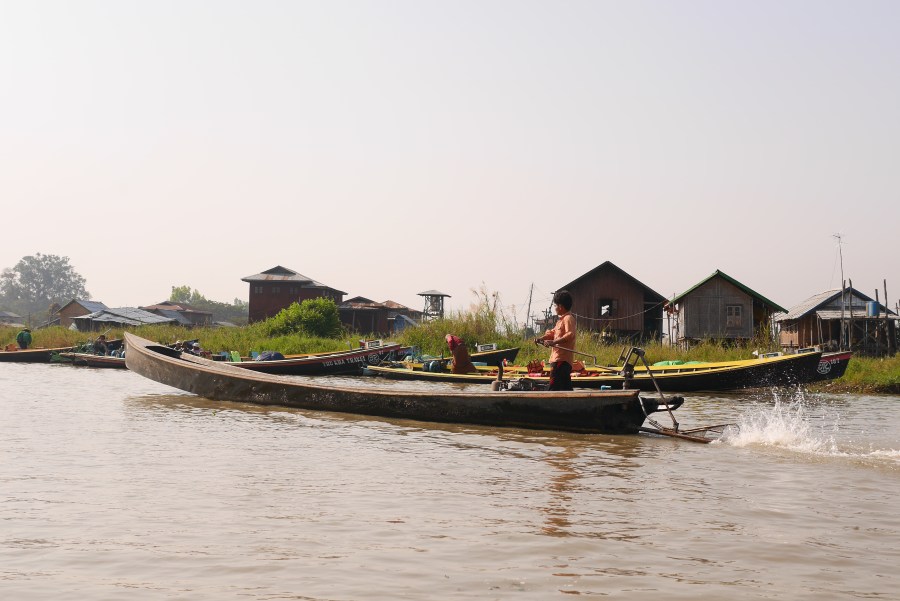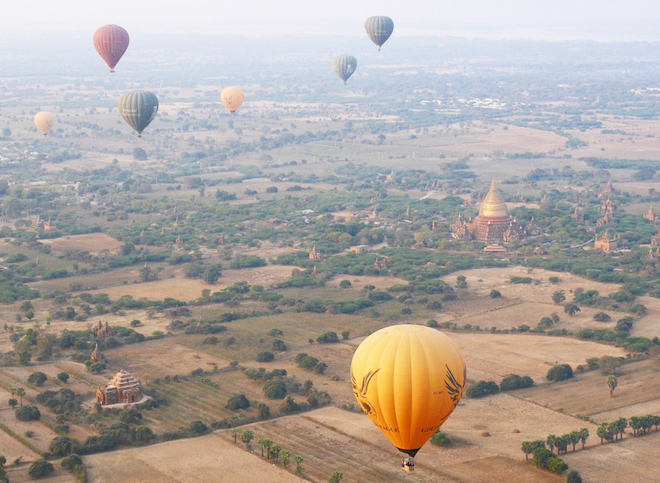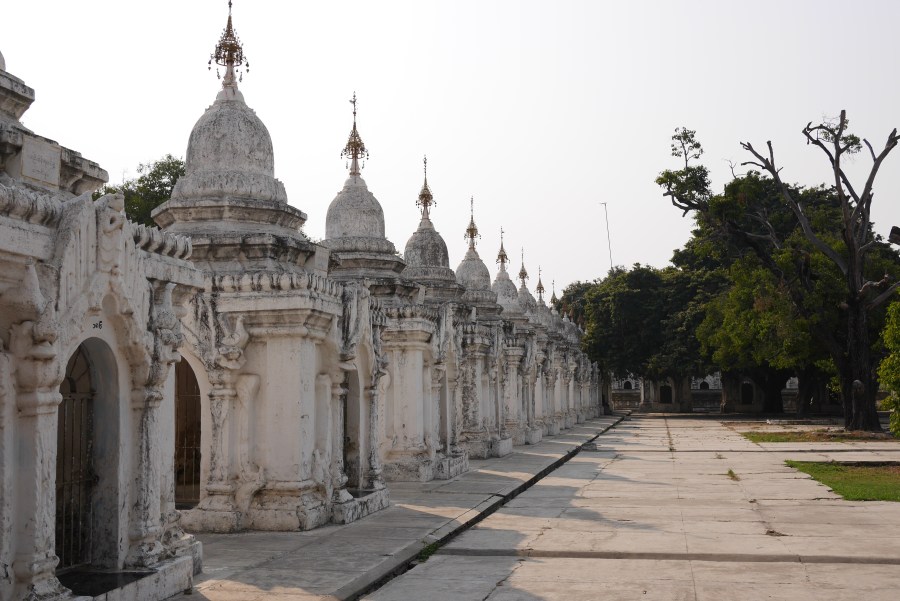By Localiiz
Branded | 17 May 2024
By Localiiz
Branded | 14 May 2024
Copyright © 2025 LOCALIIZ | All rights reserved
Subscribe to our weekly newsletter to get our top stories delivered straight to your inbox.
From the dusty pagodas scattered along the well-trodden tourist trail to the lesser-known, authentic experiences, there's more than enough to occupy any traveller for nine days in Myanmar. Guest food and travel blogger lolleroll recounts her time travelling through the different regions of this mystical nation.
Before I visited Myanmar, I knew nothing about the geography, demographics, or history of the country. To truly appreciate and enjoy it, I think it’s absolutely paramount to travel beyond Yangon. In fact, apart from visiting the Shwedagon Pagoda and Bogyoke Market – the must-see items on the itinerary – there isn’t much to do here but be stuck in a lot of frustrating traffic.Walking out of Sedona – possibly the most upscale hotel in Yangon, or all of Myanmar – from a friend’s wedding, I shouldn’t have been surprised when a middle-aged taxi driver quoted a seemingly ridiculous 8000 kyat to take us to our lunch destination. Fate would have us refuse the fair, and end up meeting Liam instead.Yangon was the last stop on a nine-day trip around Myanmar, and Liam, a young man who grew up in Singapore, was driving a taxi part-time to gain customers for auto sales. Liam shocked us with English so fluent that our observations about this fascinating country were put into perspective and explained in depth, by a true local.We wondered why Liam had moved back to Myanmar. Given the extremely rapid change in the country over the past few years, he tells us he earns the same amount of money in Myanmar as he did in Singapore, though the cost of living is substantially lower. Just how much has Myanmar changed? Well, two years ago scarcity meant that a SIM card cost US$200. Today, they are readily available at the airport for US$4.

Myanmar is quickly making its way onto travellers’ agendas. Though Yangon is home to Shwedagon Pagoda, the must-see item on every itinerary, I personally enjoyed our trip to Inle Lake the most. Here, you primarily travel around in a tiny sampan-like boat. Many of the pagodas, temples, weaving factories, wood workshops, restaurants, and even markets were on stilts above the lake. It was quite an extraordinary sight to behold.
We flew into Heho to get here. It’s located almost 1,000m above sea level, and I was ecstatic to discover that Myanmar grows its own coffee beans. I brought back some from Baboon (inside the terminal of Mandalay airport) and they were really good. Myanmar was a closed country until very recently, and it wasn't until 2013 that the Tourism Master Plan was created, targeting 7.5 million arrivals by 2020. This means that the abundance of delicious produce – especially avocados and tomatoes – are still only enjoyed domestically. The country is home to a staggering 54 million people, so it’s no wonder that international trade was never a focus.
Our tour guide (you need one at Inle Lake) took us to Shwe Kyar Pwint for lunch and it was my favourite meal of our entire trip around Myanmar. The food is meant to be simple local food, but the flavours were spot on and most importantly, they had access to the freshest ingredients. A fresh (and huge) steamed fish cost less than HK$30! They also had excellent tea leaf, tomato, and avocado salads.
The most fascinating place to visit was the regional market. At Inle Lake, they have regular five-day markets, and their location moves around the lake. Your tour guide or driver should have the details. The market is split into two parts – one with lots of handicrafts made in Myanmar (a good spot for souvenir shopping), and one for locals to buy their groceries, produce, and seafood. It’s a charming experience to take a deeper look into local life, and is great for those who enjoy buying ingredients and cooking.

Although Inle Lake is my favourite place in Myanmar, it’s hard to argue against Bagan being an essential stopping point. The ancient city is filled with over 2,000 stupas, pagodas, and temples. It is a genuinely beautiful scene to take in, despite the fact that the air is a little dusty during your visit.
Hot air ballooning is the thing to do in Bagan, but it's a costly experience, setting you back a hefty HK$2,000 per person. It is extremely enjoyable, however, and I rationalised this as a once-in-a-lifetime experience that I couldn't pass up. I would recommend this to anyone who isn’t on a budget. A few of our friends chose to enjoy the sunrise from one of the temples instead, and while the views are no less beautiful, the main turnoff is the huge crowd ready to enjoy it with you.
In all honesty, taking off my shoes and visiting pagoda after pagoda became a little tedious, especially at Bagan because that’s essentially all there is to do there. It’s good to visit a few different sites, and I was personally drawn to the beauty of Thatbyinnyu Temple. I think it’s a good idea to explore this place at your own pace, and a day or two in Bagan, visiting a few pagodas and delighting in a hot air balloon ride, is more than enough time to spend in the area.
The culinary scene in Bagan was the least impressive I had seen in Myanmar. You can tell that most restaurants are here to cater to foreigners, and while we saw great reviews of Khaing Shwe Wha on TripAdvisor (ranked #1 at the time), we were disappointed at the mediocrity of the food. We did, however, really enjoy our lunch at Sanon – a casual al fresco cafe which serves Burmese food with a fusion twist.

Wherever I go in the world, I’m always on the hunt for a good coffee shop. I was even more motivated after discovering that Myanmar grows its own coffee beans, thinking that there must be brewing connoisseurs around every corner. But I was mistaken. Time after time, I was disappointed with the cafes I chose to visit, despite doing rigorous online research before the trip. I even asked Liam, a former-barista in Singapore, where the best coffees in town where. His answer? “None”.But it was in Mandalay that I finally found a good cup, at Nova Coffee which also serves pretty good desserts. It may not quite have lived up to the good coffee shops of Hong Kong, Taipei, or London, but if you need your caffeine fix like me, then this is the place to go.
Many of the sites around Myanmar are not recognised by UNESCO as heritage sites because people keep ‘adding on’ to the original structures, changing parts of them, renewing bits and pieces, or covering temples with gold leaves. Kuthodaw Pagoda (pictured above), or The World’s Largest Book, is one of the exceptions.There are 729 of these little stupas, which each house two pages of Buddhist scriptures inscribed on a slab of stone. Apparently, if one spent eight hours a day reading this book, it would take six months to finish it! It is a beautiful, quiet place that's charming, kind of romantic, and one of my personal favourites in Myanmar. Definitely worth a visit!
Top